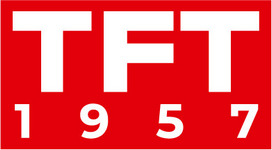- Telos Axia Altus: the virtual mixing console
- Rohde & Schwarz: the NAB premieres
Discussing the latest technological news with our respected experts – Philip Grossman and Mary Ann Seidler. Don’t forget to give the program a like!
Maria: Telos Alliance Axia Altus brings the features of a traditional console to desktop and laptop computers, tablets, and smartphones running any modern web browser. Full-function mixing — including eight virtual auxiliary mixers and integration with Telos broadcast phone systems — allows distributed workforces to collaborate on recorded programs and live broadcasts. Mary, tell me more about this.
Mary: This is a new virtual console that they’ve made from the ground up. It’s not a redesign of any hardware so a lot of thought has been put into it as to how people would use it. The question I think is “will journalists and DJs accept this?” Because it’s a development from having the feel of a physical console in front of you to having to work with a touch screen. I think a lot of people will be okay with it but there are journalists out there that aren’t going to accept it as easily. The second question is ” how do you get audio in and out of this?” I think you’ll start to see a lot of peripheral products that are quite actually great for smaller operations and journalists reporting from a site. They could have anything they wanted without having to haul a small console with them so it’s certainly the wave of the future but with the rate at which broadcasters are going to “virtualization,” I’m not quite sure. Philip, what is your thought about that? How are people accepting virtualization in the video part of the world?
Philip: I think they are accepting it well. However, the question I’ve always had about the adoption has always been about these virtual interfaces on a touchscreen. We’re used to using iPads and moving things around and I admit that occasionally when I’m on my laptop, I go to touch the screen because I’m so used to that but in the audio world, we’re so used to seeing giant audio consoles and people riding the faders. Do people need to do that anymore or is it just a thing of the past because we didn’t have automation maybe with automation today, is it going to be easier? We are just making minor adjustments on touchscreens and mouses because obviously, with a mouse, you can only move one at a time, with a touch screen, I guess you can move multiple sliders. How does that work in the audio world? Does it involve riding those sliders or making the adjustments once you’ve got them set?
Maria: I think it’s a force of habit, a lot of people are just used to using the console. It’s almost a comfort. Then switching to something that you can’t feel… Even as you say, and are absolutely right, we’re not using them that much. It’s just a habit.
Philip: I know it’ll be interesting to see. In the master control world, it was something that took longer than you would expect and they wanted that sort of touch panel. But I think what would happen is that you would see control surfaces get much smaller because you have that soft panel that you don’t need the giant controller and may have something that’s more macro-driven. It’ll be interesting to see what happens as time goes on, as younger generations who are so used to using their iPads become those that will eventually run this.
Maria: Moving on, set to premiere at NAB, the storage appliance R&S SpycerNode2 is offering more agility and connectivity, including media caching. R&S Clipster 6 Mark 2, dedicated to creating deliverables, now sees a 100% speed boost, making it much faster to create all the versions required for today’s media supply chain. So, Philip, what do you think about this?
Philip: I think it’s interesting that there’s this giant push over the last year specifically where we had to move all the content and storage to the cloud and what those in the industry specifically are seeing is that you still need high-performing local storage. And as you start to push the boundaries of doing HDR, UHD, and high frame rate, you just won’t have the capabilities in the cloud especially when it comes to editing. One of the notes of this specific unit is that it was targeted originally for playout and now they’re seeing it being adopted more for an edit which we’re seeing in the industry, in general, is there’s a big push to edit the cloud and it really isn’t taking and it isn’t really taking off the way people thought. As I always say, the cloud is never less expensive, it’s just more convenient. And you’ve got to figure out what the price for convenience is, but an appliance like this allows you to do both: onsite playout so that your facility is onsite instead of coming from the cloud streaming back down into your facility. Plus you can edit by being able to edit the same storage facility of which you’re playing. The movement of that material from one location to the other is almost instantaneously depending on the size of the file obviously, but you’re not having to move it from the cloud back into the facility, or from the facility out to the cloud. So things have been sped up and we’re seeing more of the industry moving in that direction when it comes to storage that it’s still a requirement and more storage is better.
Hosts Philip Grossman, Mary Ann Seidler, Maria Kholodova.
The live broadcast took place on March 27, 2023. Production — TKT1957 LLC, Georgia









